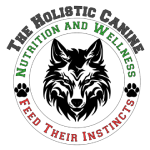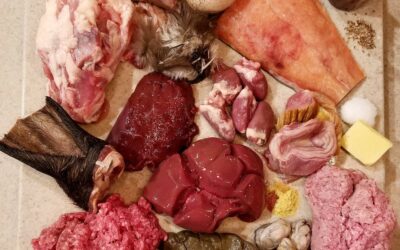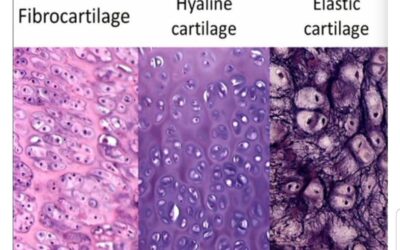Despite our best efforts, the modern canine is stricken with chronic conditions and diseases with an alarmingly increasing mortality rate. Can these conditions and diseases be prevented even if genetics plays a role? YES! Epigenetic science is showing us how diet and environment directly affect gene expression.
The Most Common Dis-ease Conditions in Dogs
If you were to do an internet search of the most common disorders afflicting the modern canine, you will discover numerous lists from multiple sources outlining the many crises laying hold of our beloved dogs. The incidence of disease is on the rise despite research into canine nutrition by organizations such as the NRC, AAFCO, FEDIAF, independent veterinarians and nutrition professionals as well as the myriad of disease preventatives pushed by the veterinary industry. Where is the system failing our beloved pets? Can we blame genetics? Before we answer those questions, let’s review the most common disease conditions afflicting today’s canines.
- Otitis (ear infections)
- Periodontal (oral) disease
- Dermatitis
- Mange (sarcoptic -Sarcopte mites, and demodectic -immune compromised & puppies)
- Allergies
- Intestinal inflammation (IBS, IBD, colitis, etc.)
- Cystitis (bladder) Infection
- Urinary bladder stones
- Urinary tract infections (UTI)
- Kidney disease [1]
- Renal failure
- Thyroid disease [2]
- Gastric torsion (bloat)
- Heart disease [3] -dilated cardiomyopathy (DCM) and arrhythmogenic right ventricular cardiomyopathy (ARVC)
- Liver disease
- Diabetes
- Arthritis
- Hip dysplasia
- Cranial cruciate ligament disease (CCL)
- Obesity
- Nuclear Sclerosis (eye)
- Degenerative myelopathy (DM)
- Fungal infection
- Cancer
Sadly, this list is not exhaustive. Our dogs are in a fight for their health and longevity. Numerous researchers, myself included, are actively seeking and testing naturopathic and food therapies as well as seeking new paths to cultivating optimal health, healing, and longevity in the modern canine.
It is blatantly clear that the pet food industry and veterinary preventatives are failing the majority of dogs. Thankfully, modern epigenetic science is casting a ray of light and hope on the war against disease and increased mortality. If you look at the above list, you will note that there exists a common thread. All of these conditions can be prevented! It is now known and understood that diet and environment play a crucial role in gene expression.
What is gene expression? To put it simply, external factors (diet and environment) have a direct impact on physiological phenotypic trait variations triggering genes to be “switched” (turned) on and off. This directly affects the way in which cells translate (decode or read) genes as opposed to changes in the DNA sequence. The purpose of epigenetic science and research is to learn and understand the dynamic diversity and modification capacity of the transcriptional potential within every cell.
Can epigenetic science help us to improve the health and longevity of our pets? The answer is YES and it is being done even now.
Let’s go back to the question posed above. Is your dog at the mercy of his genes? Are genes to blame? While genes do play a role in increasing risk potential for familial diseases and disorders, epigenetics says NO. We can influence gene expression. Your dog is no longer at the mercy of his genes. He is, however, at the mercy of his genes expressing in ways that negatively impact his health if external intervention is not engaged. It’s time to “switch” the genes into a positive and health promoting expression for the cultivation of radiant health.
Eliminating Dangerous Exposure, Conditions, & Conducts
Many breeds of dogs, especially in the United States, are passing abnormal genetic information into each successive generation which is placing each and every innocent puppy into a high risk potential for experiencing a full-blown disease condition. We call this breed disease-predisposition and genetic (or pedigree) disease potential. Does this mean that each pup will develop a predisposed condition in their future? No, but it does put them at a frighteningly high risk that increases their likelihood for experiencing the condition or even conditions. The good news is that carefully influenced epigenetic gene expression can prevent the very diseases that are threatening breed and genetic predisposed dogs.
Let’s start with what to avoid. The following is a list of examples which are known to cause genes to express deleteriously thereby having a direct adverse impact on health and disease prevention. This is by no means exhaustive, but serves to bring to light common dangers.
- Vaccinations (even one can be lethal, but here I refer to unnecessary repeat vaccines)
- Early spay and neuter
- Flea & tick chemicals (sprays, collars, dips, pills, etc.)
- Heartworm preventatives (chemical)
- Worming chemicals
- Cigarette/cigar smoke
- Air fresheners and scented candles
- Hair and body aerosols
- Shampoos containing parabens, phthalates, PEG, SLS, etc.
- Laundry detergents (especially chemically scented)
- Fabric softeners (especially chemically scented…this is a leading cause for indoor air pollution)
- Lawn and garden chemicals, weed killers (esp. glyphosate), pest control
- Farm and garden chemicals (pesticides, insecticides, fungicides, etc.)
- Household pesticides, insecticides, fungicides, rodent poisons, ant baits, etc.
- Swimming pool/hot tub chemicals
- Acetone exposure
- Nail products and paint fumes
- Carpet and floor cleaners
- Construction and automobile chemicals and oils
- Exhaust fumes from vehicles, lawn mowers, etc.
- Cleaning supplies and solutions
- Antibiotics
- Drugs, veterinary prescriptions
- Growth hormone contaminants in meat products
- Processed food diet, especially kibble
- Excessive consumption of a single recipe/diet (homemade and commercial)
- Excessive consumption of same-source ingredients (homemade and commercial)
- Unbalanced/unvaried diet
- Excessive supplementation
- High carbohydrate/fiber diet (commercial and homemade)
- Species inappropriate diet (commercial and homemade)
- Consumption of rancid fats and fish oils
- Nutrient deficient meals
- Nutrient toxic meals and supplementation
- Tap water (chlorine, fluoride, pharmaceutical contaminants, heavy metals, pesticides, etc.)
- Poor dental and gum health
- Parasite induced disease condition
- Stress/anxiety/loneliness
- Lengthy crating and confinement
- Obesity
- Lack of outdoor time
- Lack of sunlight
- Lack of fresh air
- Lack of exercise
- Lack of purpose (esp. in working breeds)
- Tight fitting collar
- Excessive heat or cold exposure
- Excessive breeding of bitch
Avoiding as many or all of the above is a plan that greatly increases the opportunity to cultivate optimal health in your dog.
Preventing Disease through the Cultivation of Optimal Health
Having learned above what we need to avoid in order to prevent the decline of health by way of undesirable gene expression, we can now look at ways in which we can influence gene expression for the cultivation of health and the prevention of disease.
Health begins firstly by avoiding health harming foods, substances, situations, and environments followed by influencing positive gene expression. We do this by creating a platform on which we can cultivate optimal health. It is a process and a practice that must be regularly maintained if health is to be continuous. Creating the correct platform begins with diet and environment. Both are dependent upon each other. Nutritional needs are dependent upon environment and environment determines nutritional needs.
First and foremost, our dogs require fresh whole foods that are appropriate to their species. This is extremely important if nutrient assimilation is to be optimal. A dog cannot gain value from grass, whole raw vegetables, grains, or whole raw seeds any more so than we can gain value from lawn clippings, raw grains, or raw legumes. For a dog to maintain health, he needs to have clean food-sources of energy and nutritional building blocks that can be easily unlocked and assimilated. There is no exception to this! Nutrients are complexes that must be gained from food sources. Nutrients come packaged alongside other nutrients, enzymes, factors, cofactors, antioxidants, constituents, and potential energy that assist and work along with other components for optimal digestion, absorption and assimilation, and the cultivation of health through appropriate gene expression. There is also the need to avoid the consumption of anti-nutrients that prevent the absorption of vital nutrients.
Environment plays a role in determining nutrient needs. Soil mineral-saturation or depletion affects nutrient needs from both local food sources and food sourced elsewhere. Also, family dynamic, stress, adverse exposures, exercise, air quality, sunlight, water quality, purpose (dogs need a sense of purpose just as we do), attention from family members, socialization, stimulus, etc. all determine nutritional requirements. If these are not taken into consideration, optimal health cannot be cultivated.
We also see health decline with energy waste. Energy is everything. Our dogs require adequate motive power for building and maintaining optimal health. We want to look for and remove any sources of unnecessary energy expenditure (energy waste). Vital energy will be diverted to the elimination of excessive toxin build-up (from both metabolic function and exposure via diet and environment) and to areas that require repair to damaged tissues caused by the exposures, conditions, and conducts listed above. By removing these energy wasting sources, energy will be freed to allow for peak motive power available to the maintenance of optimal health. When the body is powered adequately and disease preventatives are put into place, genes will express for health rather than toward disease predispositions or the failure of health.
Establishing a health-promoting microbiome is an additional step for positive gene expression. See my article The Mystifyingly Astounding Microbiome.
Failure to produce optimal health can be observed via the manifestation of adverse symptoms in the physical body, behavior, and emotions. Health is fragile when not carefully maintained and heeded. Be observant and watch for any signs that your dog is not thriving. Do not delay in removing or correcting the cause. Health can decline rapidly. For additional help, contact me for more information!
©2019 Kimberly Lloyd, PhD, BCHHP, Cert Raw Dog Food Nutritionist
1 “More than one-third of dogs (37 percent)…with kidney disease also have periodontal disease.” State of Pet Health 2012 Banfield Pet Hospital
2 “In 2011, approximately 1 in every 200 dogs had hypothyroidism.” State of Pet Health 2012 Banfield Pet Hospital
3 “Almost one-third of dogs (28 percent)…with cardiomyopathy (a type of heart disease) also have periodontal disease.” State of Pet Health 2012 Banfield Pet Hospital



